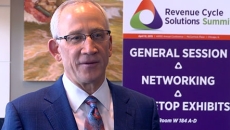Billing and Collections
Healthcare payment structures are changing, but won't necessarily hurt healthcare system's finances.
InstaMed shows healthcare providers must give consumers more online and mobile choices for paying their bills while protecting patient data.
Expenses are climbing by 8 percent this year over last, from $416 billion in 2014 to $608 billion in 2015, according to a new report from Kalorama Information.
Nearly one American in three with private health insurance got a surprise medical bill in the past two years.
New Hampshire ACO's goal is to have capitation make up 70 percent of reimbursements, dropping fee-for-service from its current 50 percent to 30 percent.
Organizations of all sizes can achieve cost savings and benefits from converting their claims reimbursements payments from paper checks to the healthcare EFT standard transaction. Here are some examples of those who did it.
Perhaps the biggest value-based challenge on the finance side is the lack of a single set of metrics by which to gauge quality.
When hospitals send invoices with charges that seem to bear no relationship to their costs, the Pennsylvania firm tells its clients (generally medium-sized employers) just say no.
Bert Zimmerli, Executive Vice President and Chief Financial Officer of Intermountain Healthcare, enthuses about wireless technology, sensors and connected health as they pertain to the growing focus on revenue cycle management in healthcare.
Experts say consumerism means hospital revenue cycle team must try harder to engage patients.
